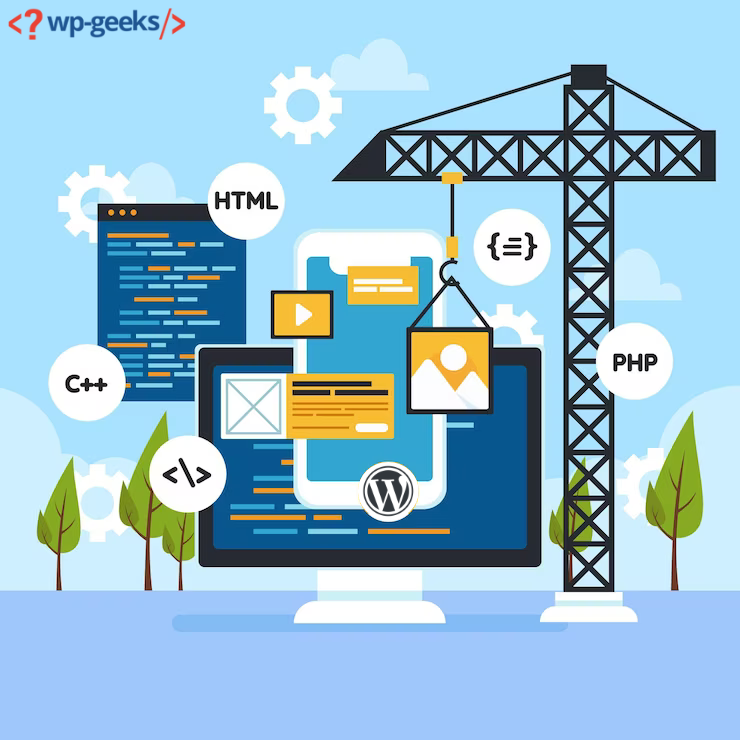Transforming Your HTML into a Dynamic WordPress Website: The Ultimate Guide!
In today's fast-paced digital landscape, having a dynamic and user-friendly website is essential for success. If you currently have a static HTML site but desire to harness the numerous benefits of WordPress, you're in the right place. This comprehensive guide will take you through the process of converting HTML to WordPress and transforming your website into a dynamic and powerful online presence.
Why Choose WordPress?
Before diving into the conversion process, it's crucial to understand why WordPress is the leading choice for websites worldwide.
Unmatched Versatility and Flexibility
WordPress is a highly versatile content management system (CMS) that powers more than one-third of all websites on the internet. Whether you're running a blog, e-commerce store, or portfolio website, WordPress can cater to your specific needs.
Extensive Collection of Themes and Plugins
With thousands of themes and plugins available, you can easily customize your WordPress site to reflect your brand and offer unique functionalities without writing extensive code.
Search Engine Optimization (SEO) Advantages
WordPress is built with SEO in mind, making it easier for search engines to crawl and index your site. This can lead to better visibility and higher rankings in search results.
Preparing for the Conversion
Before embarking on the conversion process, it's essential to lay a strong foundation.
Keyword Research: Understanding Your Audience
Begin by conducting keyword research to identify relevant keywords and phrases related to your business or niche. Use tools like Google Keyword Planner or SEMrush to discover popular search terms.
Back Up Your HTML Site
Before making any changes, create a backup of your existing HTML site to ensure you can revert to it if needed during the conversion process.
Converting HTML to WordPress
Now, let's dive into the step-by-step process of converting HTML to WordPress and transforming your static HTML site into a dynamic WordPress website.
Set Up WordPress Environment
Start by installing WordPress on your hosting server or local machine. If you're new to WordPress, consider using a local development environment to experiment without affecting your live site.
Prepare Your HTML Files
Carefully analyze your HTML files and organize them into appropriate folders to facilitate a smooth migration process.
Create a WordPress Theme Structure
Create a new WordPress theme or child theme based on your current HTML site's design. This will allow you to maintain the same look and feel while benefiting from WordPress's dynamic features.
Convert Header and Footer
Recreate your site's header and footer in WordPress using PHP and CSS. This step ensures consistency across all pages of your new WordPress website.
Migrate Content
Transfer your HTML content into WordPress pages or posts. Ensure that all formatting, images, and media elements are retained.
Configure Permalinks and Redirects
Set up proper permalink structures to maintain SEO-friendly URLs. Implement 301 redirects to redirect old HTML URLs to their corresponding WordPress URLs.
Implement CSS and JavaScript
Integrate CSS and JavaScript into your WordPress theme to retain the original styling and functionality of your HTML site.
Optimize for Mobile Responsiveness
Ensure your new WordPress website is fully responsive, providing a seamless experience across various devices, including smartphones and tablets.
Install Essential Plugins
Add essential plugins for enhanced functionality and SEO optimization. Consider installing plugins for caching, SEO, security, and contact forms.
Launching Your Dynamic WordPress Website
Congratulations! You've successfully transformed your static HTML site into a dynamic WordPress website. Before making your site live, perform thorough testing to ensure everything functions as intended.
Leveraging the Power of WordPress
With your newly transformed dynamic WordPress website, you have a powerful platform at your fingertips. Let's explore some ways to leverage the full potential of WordPress to enhance your online presence and engage your audience.
Create Engaging Content
WordPress makes it easy to create and publish content regularly. Take advantage of this feature by producing high-quality and valuable content that resonates with your target audience. Whether it's blog posts, articles, videos, or infographics, compelling content can drive traffic, boost engagement, and establish your authority in your industry.
Implement E-Commerce Functionality
If you have an online store, WordPress offers numerous e-commerce plugins that enable you to sell products and services seamlessly. Set up an e-commerce platform with features like product listings, shopping carts, secure payment gateways, and inventory management to provide a smooth shopping experience for your customers.
Engage with Plugins and Widgets
WordPress's vast library of plugins and widgets allows you to enhance the functionality of your website without complex coding. From contact forms and social media integrations to galleries and live chat support, these tools can enrich user experience and help you achieve your website goals.
Monitor Analytics and Performance
Use analytics tools like Google Analytics to monitor your website's performance, track user behavior, and identify areas for improvement. Analyzing data can provide valuable insights into visitor demographics, popular content, and conversion rates, enabling you to make data-driven decisions for your website.
Optimize for SEO
WordPress's SEO-friendly architecture is one of its greatest strengths. Optimize your content and website structure using relevant keywords, meta tags, and descriptive URLs. Additionally, leverage SEO plugins to further enhance your website's search engine visibility and rankings.
Maintaining and Updating Your WordPress Website
To ensure the continued success of your dynamic WordPress website, it's essential to maintain and update it regularly. Here are some best practices for ongoing website management:
Regular Backups
Perform regular backups of your WordPress website to protect against data loss in case of any unforeseen issues. Several backup plugins are available that can automate this process for you.
Software Updates
Keep your WordPress core, themes, and plugins up to date to ensure optimal performance and security. Updates often include bug fixes, new features, and enhanced security measures.
Security Measures
Implement robust security measures to protect your website from potential threats and cyberattacks. Use strong passwords, enable two-factor authentication, and install security plugins for an added layer of protection.
Monitor Website Performance
Regularly monitor your website's performance to identify and address any issues that may arise. Tools like Google PageSpeed Insights and GTmetrix can help you analyze your website's speed and performance.
Conclusion
Converting your HTML site to WordPress is a transformative journey that brings endless possibilities to your online presence. By following this ultimate guide, you've taken significant strides toward converting HTML Site to WordPress and creating a dynamic, user-friendly, and SEO-optimized website that captivates your audience. Embrace the power of WordPress, and watch your website flourish in the digital realm.


Comments
Post a Comment